Building a reef tank can be a rewarding and exciting experience, but it’s important to plan and set up your tank properly to ensure the health and success of your aquatic ecosystem.
In this article, we’ll go over the steps involved in building a reef tank, from choosing the right tank and setting it up, to selecting fish and corals, and maintaining your tank for the long term.
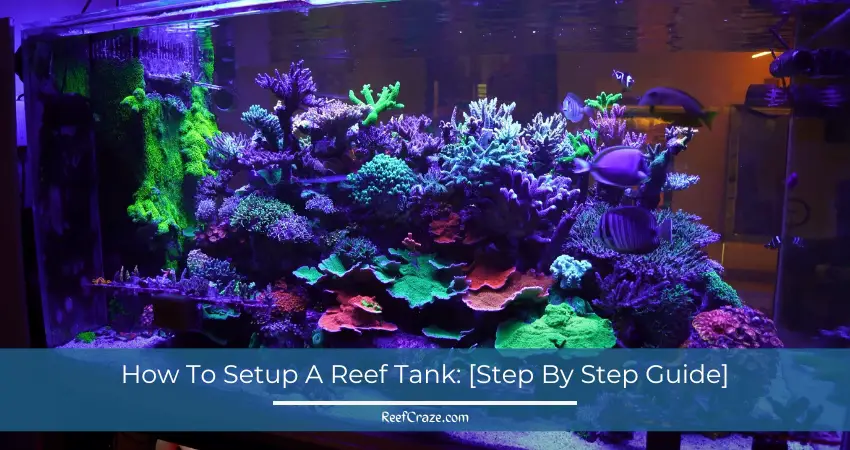
Brief overview of reef tanks and their benefits
A reef tank is a specialized type of saltwater aquarium that recreates the natural habitat of coral reefs. These tanks are home to a diverse array of marine life, including fish, corals, and other invertebrates. Reef tanks provide a unique and fascinating environment, and they have many benefits for both the aquarium hobbyist and the marine life within them.
One of the primary benefits of a reef tank is the beauty and variety of marine life it can support. Coral reefs are some of the most diverse and colorful ecosystems on the planet, and a well-maintained reef tank can provide a glimpse of this incredible world. From brightly colored fish and corals, to delicate invertebrates and fascinating microorganisms, a reef tank can be a captivating addition to any home or office.
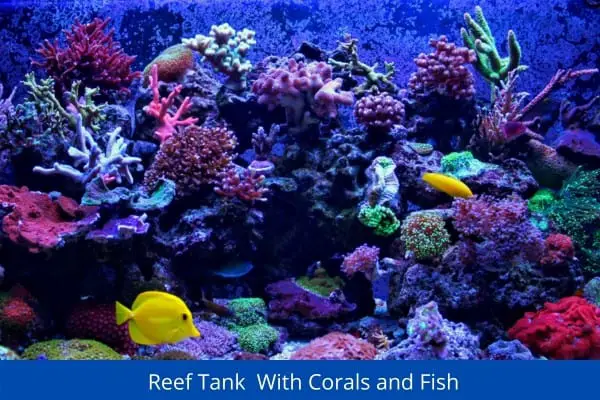
In addition to their beauty, reef tanks also provide numerous benefits for the marine life they support. In the wild, coral reefs are under threat from a variety of factors, including climate change, pollution, and over-fishing. By maintaining a reef tank, aquarium hobbyists can help preserve these fragile ecosystems and support the marine life that calls them home. Reef tanks can also provide a safe and controlled environment for marine life, allowing them to thrive and reproduce in a way that may not be possible in the wild.
Another benefit of reef tanks is the educational opportunities they provide. These tanks can teach us about the complex and delicate interactions between the various species that make up a coral reef ecosystem. They can also provide a window into the many challenges facing coral reefs in the wild, and inspire us to take action to protect these important ecosystems.
Overall, reef tanks are a unique and fascinating addition to the world of aquariums. They provide a beautiful and diverse environment for marine life, and offer numerous benefits for both hobbyists and the animals they support. Whether you’re an experienced aquarist or just starting out, a reef tank can be a rewarding and educational experience.
Importance of proper planning and setup
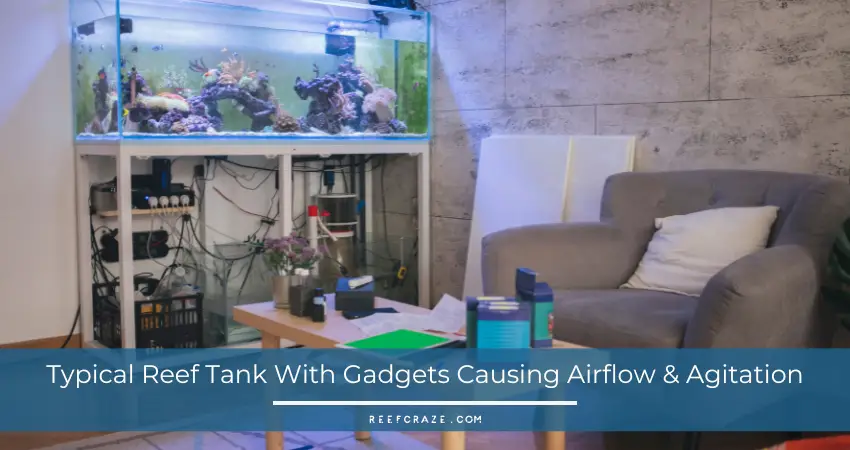
Proper planning and setup are crucial for the success of a reef tank. These specialized ecosystems require careful attention to detail, as well as a thorough understanding of the needs of the various species that call the reef home. Without proper planning and setup, a reef tank is likely to experience problems such as poor water quality, unhealthy or unhappy fish and corals, and even complete failure.
Overview of steps involved in Creating a reef tank
- Choose the right tank: consider size, shape, material, and design
- Set up the tank: install necessary equipment, add live rock and sand, and properly cycle the tank
- Select fish and corals: research and choose compatible species, quarantine and acclimate new additions, and provide proper nutrition
- Maintain the tank: regularly change and test the water, clean and maintain equipment, and troubleshoot common problems
- Continuously monitor and adjust the tank as needed to ensure the health and success of the ecosystem.
Choosing the right tank
One of the most important aspects of planning and setting up a reef tank is choosing the right tank. The size, shape, and material of the tank will all impact the success of your reef. A larger tank is generally better, as it provides more stable water conditions and allows for a more diverse ecosystem. The shape and material of the tank should also be considered, as these factors can impact the health and happiness of your fish and corals.
1. Size and shape
The size and shape of the tank that you choose for a reef aquarium will depend on a number of factors, including the size and number of the marine organisms that you want to keep, the amount of live rock and other decorations that you plan to include in the aquarium, and the amount of space that you have available to accommodate the tank.
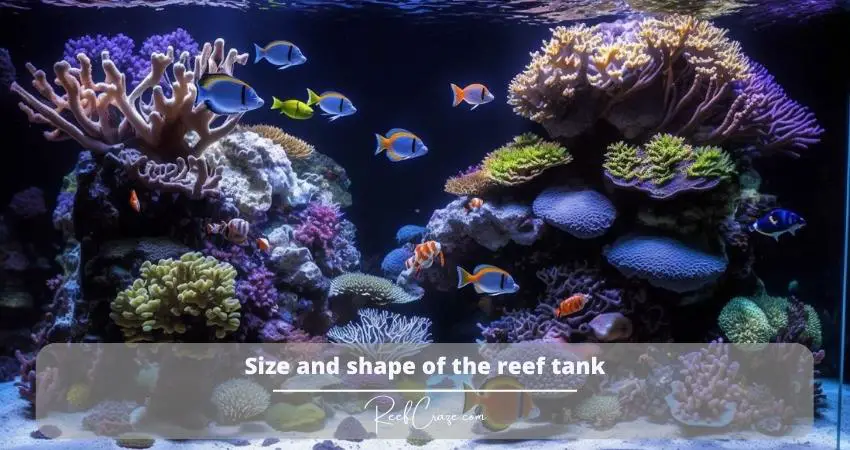
In general, it is recommended to choose a tank that is at least 20 gallons in size for a small reef aquarium. This will provide enough space for a variety of marine organisms, such as small fish and invertebrates, as well as live rock and other decorations. Larger tanks, such as those that are 50 gallons or more in size, are better suited for larger marine organisms and more complex reef setups.
As for the shape of the tank, rectangular tanks are a popular choice for reef aquariums because they provide a large surface area for water-to-air exchange, which is important for maintaining good water quality.
However, other shapes, such as cylindrical or hexagonal tanks, can also be suitable for reef aquariums, depending on your specific needs and preferences. It is important to choose a tank that is made of high-quality materials and is designed specifically for use as a reef aquarium.
2. Material and design
The material of the tank is typically made of clear, high-quality glass or acrylic. Glass is a popular choice because it is strong and durable, and it allows for good visibility of the marine life inside the tank. Acrylic is a less common but increasingly popular choice because it is lighter and more flexible than glass, making it easier to transport and install.
The design of the reef tank should be carefully planned in order to create a suitable environment for the marine life that it will house. This typically involves including live rock and other decorations, such as coral and artificial plants, to create hiding places and other areas for the marine life to explore. It is also important to consider the lighting and filtration systems that will be needed to maintain good water quality and create the right conditions for the marine life to thrive.
3. Location and lighting
When selecting the location of a reef tank, it is important to choose a place that is stable and not prone to vibrations or other disturbances. The tank should be placed on a sturdy and level surface that can support its weight, and it should be kept away from direct sunlight and other sources of heat and light.
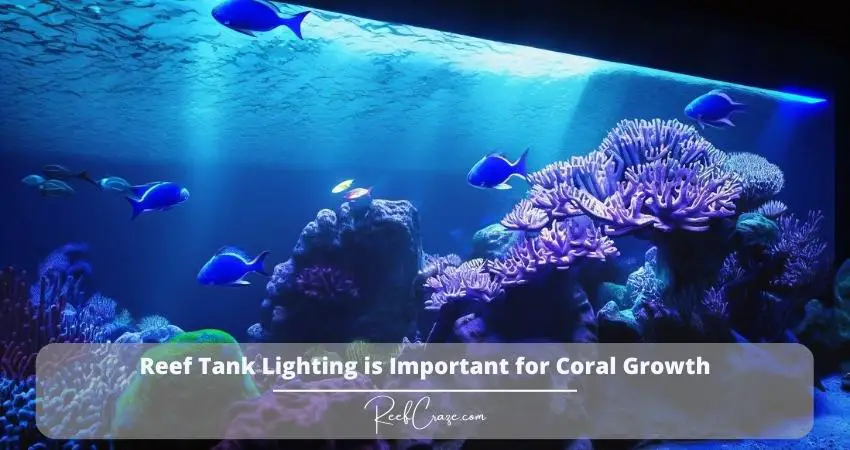
The lighting of a reef tank is also an important factor to consider, as it can affect the growth and health of the marine life that it will house. The type of lighting that is best for a reef tank will depend on the specific requirements of the marine life that it will house, as well as the overall design and layout of the tank.
In general, it is recommended to use full-spectrum lighting that mimics the natural sunlight that coral reefs and other marine organisms would receive in their natural habitat. This can be achieved through the use of specialized lighting fixtures, such as metal halide or LED lights, that are designed specifically for use in reef aquariums.
Setting up the tank
A reef aquarium requires specialized equipment to maintain healthy water conditions and support the various species that call the reef home. This includes a filtration system, heating system, and lighting system. It’s important to research and choose the right equipment for your tank, and to carefully install and set it up according to the manufacturer’s instructions.
1. Filtration and filtration media
The filtration system and the filtration media that are used in a reef tank play a crucial role in removing waste and other contaminants from the water, as well as providing oxygen and other essential nutrients to the marine life that it will house.
There are different types of filtration systems that can be used in a reef aquarium, each with its own unique features and benefits. The most common types of filtration systems for reef aquariums include mechanical, biological, and chemical filtration.
Mechanical filtration involves the use of filtration media, such as filters, sponges, and pads, to remove physical debris and waste from the water. This type of filtration is important for maintaining good water quality and clarity, and it is typically the first step in the filtration process.
Biological filtration involves the use of filtration media, such as live rock and other biological media, to provide a habitat for beneficial bacteria and other microorganisms that help to break down waste and other organic matter in the water. This type of filtration is essential for maintaining good water quality and a healthy ecosystem in the reef aquarium.
Chemical filtration involves the use of filtration media, such as activated carbon and other chemical media, to remove dissolved substances and other contaminants from the water. This type of filtration is important for removing toxins and other harmful substances from the water, and it is typically used as the final step in the filtration process.
Overall, the filtration system and filtration media that are used in a reef aquarium play a crucial role in maintaining good water quality and a healthy environment for the marine life that it will house. It is important to choose the right filtration system and filtration media for your specific reef aquarium in order to create the best possible environment for your marine life.
2. Heating and temperature control
In general, it is recommended to maintain a consistent water temperature in a reef tank that is within the natural range of temperatures that are found in coral reefs and other marine environments. This typically means keeping the water temperature between 72 and 78 degrees Fahrenheit (22 to 26 degrees Celsius), although some marine organisms may require slightly higher or lower temperatures depending on their specific needs.
To maintain the desired water temperature in a reef tank, it is typically necessary to use a heater to raise the temperature of the water if it falls below the desired range, and a chiller to lower the temperature of the water if it rises above the desired range. The type and size of the heater and chiller that are needed will depend on the size of the reef tank and the specific temperature requirements of the marine life that it will house.
In addition to using a heater and chiller, it is also important to monitor the water temperature regularly and make any necessary adjustments to the heating and cooling systems in order to maintain the desired temperature range. This can typically be done using a digital thermometer or other temperature-monitoring device.
Overall, the heating and temperature control of a reef tank are important factors to consider in order to create a healthy and sustainable environment for the marine life that it will house. It is important to choose the right heating and cooling equipment and to monitor the water temperature regularly in order to maintain the desired temperature range in your reef aquarium.
3. Adding live rock and sand
Live rock and sand are important components of a reef tank, as they provide a habitat for beneficial bacteria and other microorganisms, as well as a natural-looking environment for the marine life that it will house.
Live rock is a type of porous rock that is typically used in reef aquariums. It is called “live” because it is typically colonized by beneficial bacteria and other microorganisms that help to break down waste and other organic matter in the water. Live rock also provides a habitat for a variety of marine organisms, such as corals, sponges, and other invertebrates, and it can be used to create hiding places and other areas for the marine life to explore.
Sand is another important component of a reef tank, as it provides a natural-looking substrate for the marine life that it will house. Sand can be used to create a natural-looking ocean floor in the reef tank, and it can also provide a habitat for a variety of marine organisms, such as burrowing animals and other invertebrates.
4. Cycling the tank
Before adding any fish or corals to your tank, it’s crucial to properly cycle the tank. This involves establishing a balanced ecosystem and ensuring that the water is free of harmful toxins. This can take several weeks to complete, and may require testing and adjusting the water parameters to support the growth of beneficial bacteria.
Selecting fish and corals
Once your tank is set up and cycled, it’s time to start adding fish and corals. It’s important to carefully research and choose species that are compatible with each other, as well as the conditions in your tank. Quarantine and acclimate new fish and corals to your tank to ensure they are healthy and free of diseases. Proper feeding and nutrition are also crucial for the health of your fish and corals.
1. Compatibility
In a reef aquarium, it is important to choose fish and coral that are compatible with each other in order to create a balanced ecosystem. This means selecting fish and coral that have similar environmental requirements, such as temperature and water quality, as well as choosing fish that are not likely to harm or disturb the coral.
When choosing fish for a reef aquarium, it is important to consider the specific requirements of the coral that will be housed in the tank. Some coral species require specific water conditions, such as a certain temperature range or a specific pH level, in order to thrive. It is important to choose fish that are compatible with these requirements in order to create a healthy environment for both the fish and the coral.
In addition to considering the environmental requirements of the coral, it is also important to choose fish that are not likely to harm or disturb the coral. Some fish species, such as certain types of tangs and angel fish, are known to nip at coral or otherwise damage it. It is important to avoid choosing these types of fish if you plan to include coral in your reef aquarium.
2. Quarantine and acclimation
Quarantine and acclimation are important processes that are typically performed when introducing new marine life to a reef tank. These processes help to ensure that the new marine life is healthy and free from diseases or other health issues, and they also help to acclimate the marine life to the conditions in the reef tank, such as the water temperature and chemistry, in order to prevent shock or other adverse reactions.
Quarantine is the process of isolating new marine life in a separate tank or other containment area before introducing it to the main reef tank. This is typically done to ensure that the marine life is free from diseases or other health issues that could be harmful to the other inhabitants of the reef tank. Quarantine typically involves providing the marine life with the necessary food, water quality, and other care that it needs in order to stay healthy.
Acclimation is the process of gradually adjusting the new marine life to the conditions in the main reef tank, such as the water temperature and chemistry. This is typically done to prevent shock or other adverse reactions that could be caused by sudden changes in the water conditions. Acclimation typically involves slowly mixing water from the main reef tank with the water in the quarantine tank over a period of several hours, allowing the marine life to gradually adjust to the new conditions.
3. Feeding and nutrition
The type and amount of food that is provided to the marine life in a reef tank will depend on the specific requirements of the marine life that it will house, as well as the overall health and condition of the tank.
In general, it is recommended to provide a varied and balanced diet to the marine life in a reef tank in order to ensure that they receive all of the essential nutrients that they need to thrive. This can typically be achieved by providing a variety of different types of food, such as frozen or live food, pellets, flakes, and other types of prepared foods. It is also important to consider the specific dietary needs of the different types of marine life that will be housed in the tank, as some marine organisms may require different types of food or may have specific dietary restrictions.
In addition to providing a varied and balanced diet, it is also important to consider the frequency and amount of food that is provided to the marine life in the reef tank. Overfeeding can lead to a build-up of waste and other contaminants in the water, which can be harmful to the marine life and cause water quality issues.
On the other hand, underfeeding can lead to poor health and malnutrition in the marine life. It is important to find a balance and provide the marine life with the right amount of food to meet their dietary needs without causing any negative effects on the water quality or the health of the tank.
Maintaining the tank
After your tank is up and running, it’s important to maintain it properly to ensure the health and success of your aquatic ecosystem. This involves regular water changes and testing to maintain water quality, as well as cleaning and maintaining your equipment. It’s also important to troubleshoot and address common problems such as algae blooms or disease outbreaks.
1. Regular water changes and testing
Regular water changes and testing are important aspects of maintaining a healthy and sustainable environment for the marine life in a reef tank. Water changes involve removing a portion of the water from the tank and replacing it with fresh, clean water, while testing involves measuring the various chemical and physical parameters of the water in the tank in order to monitor its quality and condition.
Water changes are typically performed on a regular basis, such as every week or every two weeks, in order to remove waste and other contaminants that can build up in the tank over time. This helps to maintain good water quality and prevent the build-up of toxins and other harmful substances that can be harmful to the marine life. Water changes also help to replenish important nutrients and minerals that are depleted from the water over time, such as calcium and magnesium, which are essential for the growth and health of coral and other marine organisms.
Testing the water in a reef tank is also an important aspect of maintaining a healthy and sustainable environment for the marine life. This involves measuring the various chemical and physical parameters of the water, such as the pH level, the temperature, and the levels of ammonia, nitrite, and nitrate, in order to monitor its quality and condition. Regular testing allows you to detect any changes or problems with the water quality and make any necessary adjustments or corrections in order to maintain a healthy and stable environment for the marine life in the tank.
2. Cleaning and maintenance
Regular cleaning and maintenance help to keep the tank in good condition and prevent the build-up of waste and other contaminants that can be harmful to the marine life.
The specific cleaning and maintenance tasks that are required for a reef tank will vary depending on the size and complexity of the tank, as well as the specific requirements of the marine life that it will house. In general, the following tasks are typically performed as part of the cleaning and maintenance routine for a reef tank:
- Removing any visible debris or waste from the tank, such as uneaten food or dead plants.
- Cleaning the filters and other equipment in the tank, such as the heater and the protein skimmer.
- Testing the water quality and making any necessary adjustments or corrections, such as adding chemicals to maintain the desired pH level or changing the water in the tank.
- Checking the health and condition of the marine life in the tank, and providing any necessary care or treatment.
- Cleaning the glass or acrylic walls of the tank to remove any algae or other deposits.
- Checking the lighting and other equipment in the tank to ensure that it is functioning properly.
There is no specific schedule that you must follow for cleaning and maintenance of a reef tank, as the frequency and type of tasks that are performed will depend on the specific requirements of the tank and the marine life that it will house. However, it is generally recommended to perform regular cleaning and maintenance tasks on a weekly or biweekly basis in order to keep the tank in good condition and prevent any problems from developing.
3. Troubleshooting common problems
There are a variety of potential problems that can arise in a reef tank, and it is important to identify and address these issues in order to prevent them from causing harm to the marine life or damaging the tank.
Some common problems that can arise in a reef tank include:
- Algae growth: Algae is a natural part of a reef ecosystem, but excessive growth of algae can be a problem in a reef tank. Algae can block light and oxygen from reaching the coral and other marine life, and it can also produce toxins that can be harmful to the marine life. To prevent excessive algae growth, it is important to maintain good water quality and provide adequate lighting and filtration.
- Poor water quality: Water quality is an important factor in a reef tank, as it can have a significant impact on the health and wellbeing of the marine life that it will house. Poor water quality can be caused by a variety of factors, such as a build-up of waste and other contaminants, inadequate filtration, or incorrect water chemistry. To prevent poor water quality, it is important to perform regular water changes and testing, and to address any problems that are identified through testing.
- Diseases: Diseases can be a common problem in a reef tank, as the close quarters and crowded conditions can make it easy for diseases to spread among the marine life. To prevent diseases, it is important to quarantine new marine life before introducing it to the main tank, and to carefully monitor the health and condition of the marine life in the tank in order to identify any potential problems.
- Inadequate lighting: Lighting is an important factor in a reef tank, as it is essential for the health and growth of the coral and other marine life that it will house. Inadequate lighting can prevent the coral from receiving the light and energy that it needs, which can lead to poor health and growth. To prevent inadequate lighting, it is important to choose the right type and intensity of lighting for the specific types of coral and other marine life that will be housed in the tank, and to maintain the lighting equipment to ensure that it is functioning properly.
It is important to identify and address any potential problems that arise in order to prevent them from causing harm to the marine life or damaging the tank.
Wrapping Up
Building a successful reef tank is a long-term project that requires careful planning and attention to detail in order to create a healthy and sustainable environment for the marine life that it will house.
Patience is an important quality to have when building a reef tank, as it can take time for the tank to mature and for the coral and other marine life to thrive. It is important to be patient and allow the tank to develop and grow over time, rather than trying to rush the process or push the tank beyond its limits. This will help to ensure that the tank is healthy and sustainable, and that the marine life is able to thrive and grow.
Research is also an important aspect of building a successful reef tank. It is important to research the specific requirements of the coral and other marine life that will be housed in the tank, as well as the specific conditions that are needed to create a healthy and sustainable environment for them. This may involve reading books, articles, and other sources of information, as well as consulting with other hobbyists or experts in the field.
